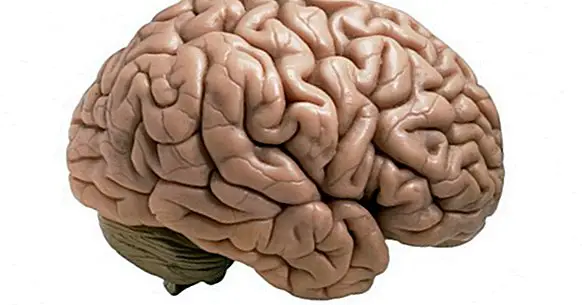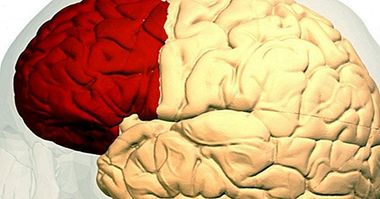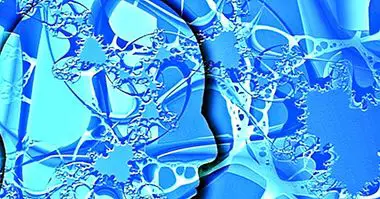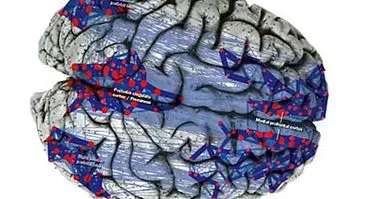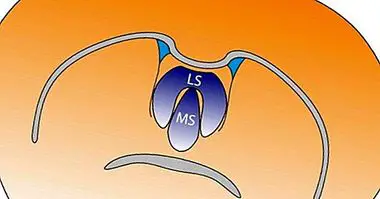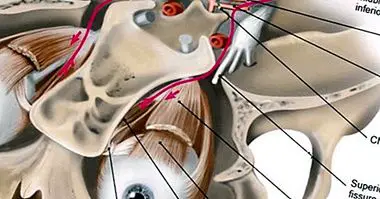Cisura de Silvio (brain): what it is, functions and anatomy
Our brain is one of our most important and complex organs , being full of different structures, areas and regions of great importance that govern different basic aspects for the maintenance of life.
These structures require a space to exist, a space that is limited by the bone structure that protects the organ: the skull. And some of these structures could be truly large, as with the cerebral cortex. Fortunately throughout our development the brain is compacted, growing the cerebral cortex in such a way that it forms different folds (which gives the brain its characteristic appearance). And with these folds also appear the furrows between them. One of the most famous is the lateral groove or the Silvio fissure .
- Related article: "Parts of the human brain (and functions)"
Fissures and grooves
Before going into detail about what Silvio's fissure is, we must stop for a moment and consider first how our brain is structured. In this way we will understand better the path that traces along the cerebral cortex this cleft.
Viewed from the outside, the brain appears as a relatively compact mass, the cerebral cortex being full of folds so that the whole of it fits inside the skull. The fact that these folds exist also generates the existence of different grooves, which are called fissures or grooves. The concave parts, the ones that stand out, are the turns or convolutions.
So it is considered a furrow or cerebral fissure to that Slit or hollow that leaves the cerebral cortex when retreating on itself during development and that, seen from the surface, gives an idea of what are the limits of the lobes of the brain.
- Maybe you're interested: "7 documentaries that talk about the human brain"
Silvio's fissure: what is it and what areas does it separate?
The Silvio fissure or side groove is next to Rolando's one of the most visible and recognizable fissures or grooves of the human brain. It is located in the lower part of the two cerebral hemispheres and then traverses a large part of the brain transversally. Said groove appears horizontally, being located in the naso-lambdoid line.
It is one of the most important furrows, since separates the temporal and parietal lobes and in its lower part the frontal of the temporal . We are before the deepest cleft that exists in the whole brain, to the point that in its depths lies the so-called fifth cerebral lobe: the insula. It also contains the transverse temporal gyrus, which participates in the auditory system.
It should also be noted that through it passes the middle cerebral artery, also called the silvana artery for this reason, it irrigates the different brain regions of the area.
This fissure is one of the first to appear throughout our development, being already visible in fetal development. Specifically, it can often be observed after the fourteenth week of gestation. Its morphology and depth will evolve as the fetus develops.
- Maybe you're interested: "The lobes of the brain and its different functions"
Branches
Silvio's fissure can be divided into several branches , specifically in three main ones: ascending or vertical branch, horizontal branch and branch of oblique trifurcation. The name of these gives an idea about their orientation.
Between the first and the second we can find the third frontal convolution, and in particular the pars triangularis (corresponding to the Brodmann area 45). In the horizontal branch the pars orbitalis (area 47) and the pars opercularis (corresponding to area 44) between the branches of oblique and vertical trifurcation. These areas are associated with the production of language.
Diseases and disorders with alterations in this fissure
Silvio's fissure is a groove that all or practically all human beings possess. But nevertheless, there are diseases in which this fissure does not form correctly or it is altered for some reason. Among them we can find examples in the following pathologies.
1. Alzheimer's and other dementias
Patients with Alzheimer's usually present throughout the development of their disease an enlargement of Silvio's fissure , said enlargement being the product of the degeneration of the neuronal tissue. This anomaly can also be found in other dementias and neurodegenerative diseases, which with the passage of time are killing nerve cells and causing the brain to be left with a withered appearance, with large grooves and very pronounced folds. This means that its effects are not limited to the silvian fissure, but that they are felt throughout the cortex in general.
- Maybe you're interested: "Alzheimer's: causes, symptoms, treatment and prevention"
two.The absence of brain furrows: lissencephaly
Lissencephaly is an anomaly generated throughout the neurodevelopment in which the brain appears smooth and either without or with few convolutions and fissures, alteration caused by a deficit or absence of neuronal migration or by an excess of this . This phenomenon may have genetic causes or be due to alterations produced during embryonic development.
It can be presented in two ways: the complete one, also called agiria, in which no convolutions or brain grooves develop, and the incomplete or pachyglyphic in which there are some, although they are few and very broad. There is usually a deficient coating of cerebral parenchyma in the Sylvian fissure.
In general, the prognosis is not good, and the disease is associated with a short life expectancy, presenting symptoms such as seizures, respiratory problems and intellectual disability, although in some cases there are no major problems.
- Related article: "Lissencephaly: symptoms, causes and treatment"
3. Opercular syndrome
Opercular or perisylvian syndrome , in which problems of motor control or even paralysis appear in the area of the face, is also linked to the Sylvian fissure when there are problems in the opercula, the cerebral areas that surround the Sylvian fissure and correspond to the not directly visible from the outside.
4. Cerebrovascular disorders
The middle cerebral artery passes through the Sylvian fissure. That is why alterations in this area can also affect this part of the circulatory system, which is capable of generating problems such as aneurysms, hemorrhages or embolisms.
Bibliographic references:
- Chi J.G .;; Dooling, E.C. & Gilles, F.H. (January 1977). «Gyral development of the human brain». Annals of Neurology 1 (1): 86-93.
- Kandel, E.R .; Schwartz, J.H .; Jessell, T.M. (2001). Principles of Neuroscience. Madrid: MacGrawHill.
- Santos, L. (2000). Synthesis of human anatomy. Conceptual keys and Atlas of basic schemes. Editions University of Salamanca.

